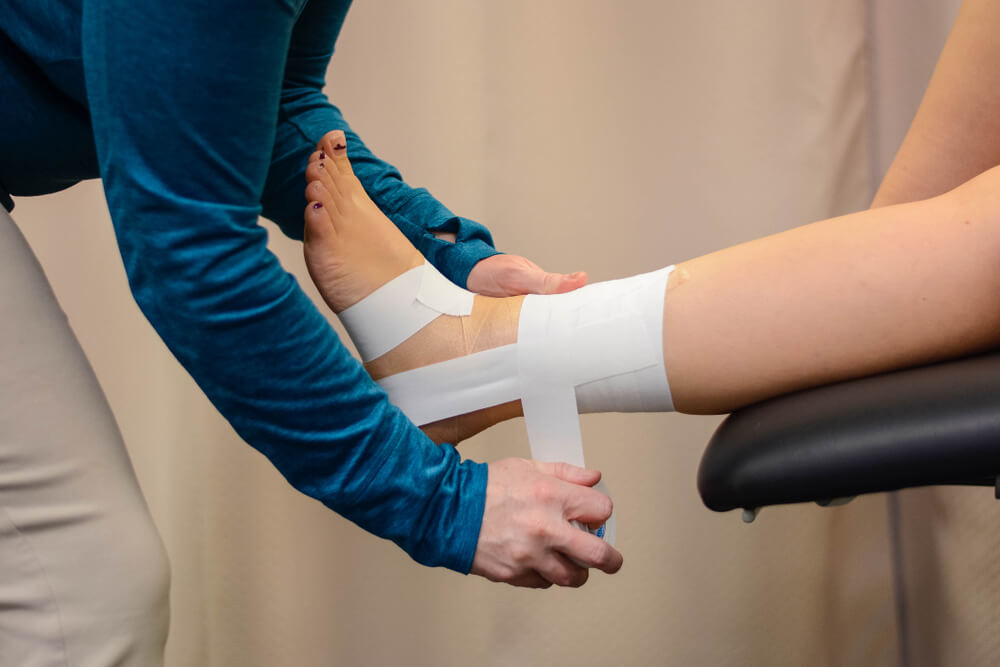Most people associate an ankle sprain with playing sports, and that’s understandable. Ankle sprains are one of the most common sports-related injuries. What you might not know is that they are also a common type of work injury.
Sprains, strains and tears are the most common work injury category according to the National Safety Council. This organization reports that these injuries made up about one-third of all the nonfatal work injuries reported in 2019. Fortunately, many people know the signs of an ankle sprain, but one question physical therapists are often asked by ankle sprain sufferers is, “When can I go back to work after an ankle sprain?” These specialists can help you determine when you are likely to be able to get back to work. They can also help you reduce the time your ankle sprain recovery takes.
When can you get back to work after an ankle sprain?
Figuring out when you can go back to work after an ankle sprain can be tricky. Why? Every patient is slightly different, and there are many factors that can affect your healing time. One of the most important factors that affect ankle sprain healing time is sprain severity. The different levels of sprain severity are:
- Grade 1 — Mild sprain that can take approximately three to five weeks to heal.
- Grade 2 — Moderate sprain that can take between four to six weeks to heal.
- Grade 3 — Severe sprain that can take about three to six months to heal.
These times can give you an idea of when you may be able to get back to work after an ankle sprain. However, they can also be affected by the type of injury treatment you have and other factors.
Can physical therapists help you get back to work faster?
Many patients who have physical therapy (PT) for their ankle sprain do get better faster. Even medical studies show that PT is a positive factor. One ankle sprain study found that a multitechnique physical therapy plan helped patients regain 87% of their normal ankle function in four weeks. For many, this level of function could allow them to return to work in a limited capacity. And, that’s not the only way physical therapists can contribute to your recovery. They can also help:
- Reduce your pain.
- Increase your joint flexibility and range of motion.
- Educate you about your injury, treatment plan and what to avoid while you’re healing.
- Decrease your risk of developing ankle sprains in the future.
Find help for your work-related ankle sprain at Continuum Wellness
Concerned about when you can go back to work after an ankle sprain? Let our physical therapists at Continuum Wellness help ease your mind. We can do a free screening to determine how severe your sprain is. Then, our clinicians can build you a treatment plan that’s unique to your injury severity and recovery goals.
Contact our team today for more information on our ankle sprain treatment services or to schedule your initial appointment.

